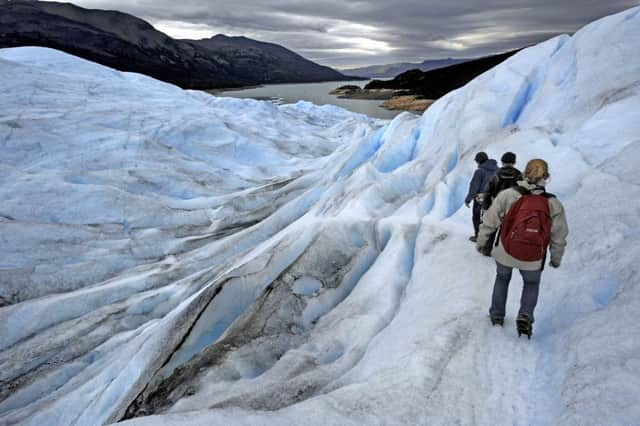Most glaciers will be gone in a few centuries


Scientists in the US have recalculated the dates when glacial boulders were uncovered at the end of the last ice age, which they say conclusively shows the global thaw 11,000 years ago was due to a rise in ancient greenhouse gases. They say this confirms dire forecasts of future glacial retreat, which suggest most bodies of ice will disappear over the next few hundred years as a result of rising temperatures caused by human activities.
Today’s levels of carbon dioxide, one of the key drivers of global warming, are significantly higher than they were then.
Advertisement
Hide AdAdvertisement
Hide Ad“Our study really removes any doubt as to the leading cause of the decline of the glaciers by 11,000 years ago – it was the rising levels of carbon dioxide in the earth’s atmosphere,” said Jeremy Shakun, assistant professor of earth and environmental sciences at Boston College.
“Glaciers are very sensitive to temperature. When you get the world’s glaciers retreating all at the same time you need a broad, global reason for why the world’s thermostat is going up.
“The only factor that explains glaciers melting all around the world in unison during the end of the ice age is the rise in greenhouse gases.”
Co-author Peter Clark, of Oregon State University, added: “This shows that at the end of the last ice age it was only the increase in carbon dioxide and other greenhouse gases that could have caused the loss of glaciers around the world at the same time.
“This study validates predictions that future glacial loss will occur due to the ongoing increase in greenhouse gas levels from human activities.”
He warned that as much as 90 per cent of the world’s glaciers could be lost in the next few centuries if greenhouse gases keep rising at the current rate.
Melting ice will contribute to rising sea levels and could have a serious impact on water supplies around the world.
The new findings are based on studies of boulders from glacial moraines around the world which were uncovered when the ice melted after being buried for thousands of years. Exposure to cosmic radiation produces an isotope within the stones that can be measured to determine when they were first uncovered.
Advertisement
Hide AdAdvertisement
Hide AdRecent scientific advances allowed the team to more accurately date samples taken from nearly 200 sites worldwide.
The researchers found regional factors affected the precise timing and pace of glacier retreat from one place to another, but concluded that rising carbon dioxide levels in the atmosphere was the major driver of the overall global meltdown.
They say their findings have significance for the modern climate crisis.
Mr Shakun said: “In any given decade you can always find some areas where glaciers are holding steady or even advancing, but the big picture across the world and over the long run is clear – carbon dioxide is making the ice melt.
“This has relevance to today since we have already raised carbon dioxide by more than it increased at the end of the ice age, and we are on track to go up much higher this century –which adds credence to the view that most of the world’s glaciers will be largely gone within the next few centuries.”
Carbon dioxide levels jumped from approximately 180 parts per million to 280 parts per million at the end of the last ice age, which lasted for nearly 7,000 years.
Following more than a century of industrialisation, levels are now increasing rapidly and currently stand at around 400 parts per million.
“This tells us we are orchestrating something akin to the end of an ice age, but much faster,” Mr Shakun added.
“As the amount of carbon dioxide continues to increase, glaciers around the world will retreat.”